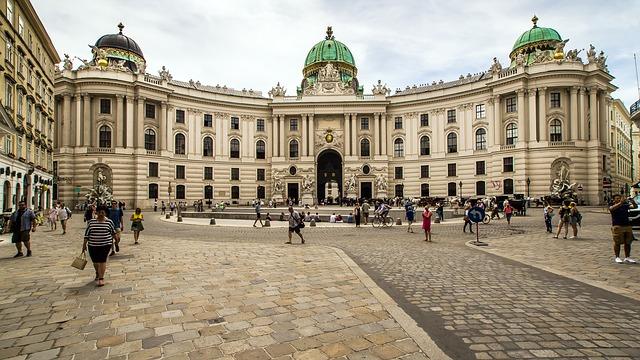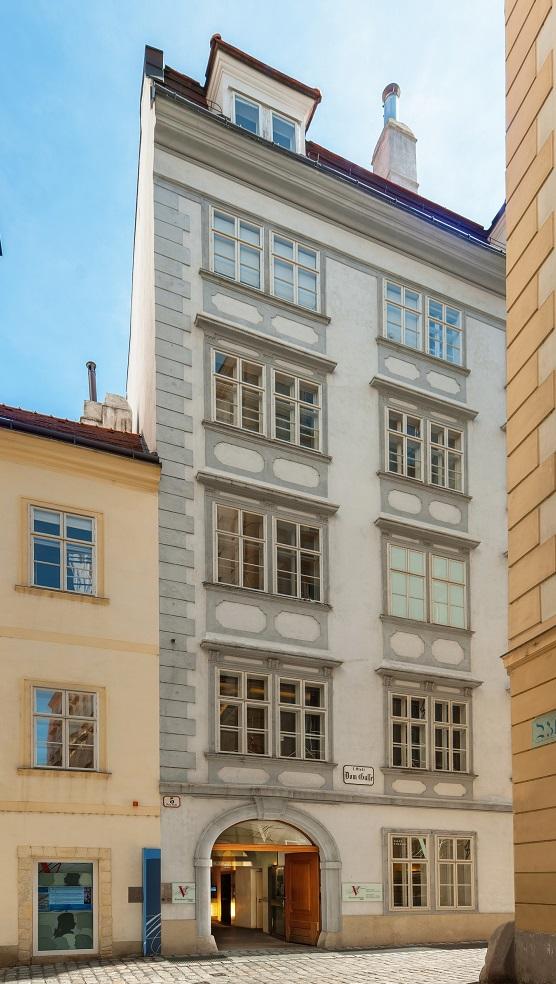Modern Foreign Languages School Trip To Vienna
One of Europe’s great cultural cities, German language lessons can be combined with a range of world-class attractions covering many subjects including history, art, architecture, music and psychology. Enjoy the city markets or savour the smells and twinkling lights of wonderful Christmas Markets during the Advent period.
Highlights
Practice German at the colourful Naschmarkt
The spectacular Schonbrunn Palace and Gardens (UNESCO)
Klimt masterpieces in the Belvedere
Guided walking tour in German
Cramlington Learning VillageTrip was wonderful overall, the students are all scoring it 8/9/10 out of 10 which is very positive
Suggested itinerary
What's included
NB: Excursions and entrance fees are not included in typical price
Recommended excursions
Travelbound can arrange language lessons at a local language school. This gives students a chance to work on grammar, vocabulary and pronunciation. Afterwards, they can use what they have learned in a real context. Focused study combined with immersion in the language leads to the speedy development of more advanced skills. Lessons are held over 3 days and last 2 hours each
Vienna’s most popular tourist attraction and a UNESCO World Heritage site. This magnificent Palace, once a country summer residence, is now integrated into the wider city. The Palace building was transformed in the 18th century by Empress Maria Theresia. Learn how each monarch left their mark on the Palace until Austria became a Republic in 1918. Explore too the spectacular Palace Gardens.
Enjoy the extensive Palace gardens at Schonbrunn which together with the Palace are a UNESCO World Heritage Site. The gardens opened to the public around 1779 and can be enjoyed for their cultural and historic interest with fountains, statues, monuments, pavilions, replica Roman ruins and a maze. The park also includes baroque formal gardens and a botanic garden complete with Palm House and a zoo.
This is the oldest amusement park in the world and a popular place with locals and tourists alike. Enjoy a number of rides, attractions, arcades, cafes, restaurants etc.. The most famous attraction is by all means the Ferris Wheels from which you can see Vienna from a height of 200 feet. Although entrance to the Prater is free, there is a charge to use the various rides/attractions.
For centuries, the Vienna Hofburg was the centre of the Habsburg Empire. Nowadays it provides an insight into the tradition and daily life at court thanks to the authentically-furnished Imperial Apartments, the Sisi Museum and the Silver Collection with its comprehensive collection of Imperial utilitarian objects.
Vienna’s most famous market is The colourful Naschmarkt dating back to the 16th century. Around 120 market stalls and restaurants spread along 500m selling fruit and vegetables, fish, meats, cheeses and spices, wines cheeses, olives and other delicacies and goods from around the world. Street food stalls and restaurants add to the atmosphere. A great place to see a snapshot of local life. There is a fleamarket on Saturday.
Built in the early 18th century as a summer residence for Prince Eugene of Savoy this baroque palace complex consists of the Upper and Lower Belvedere, the Orangery, and the Palace Stables. The Belvedere houses the greatest collection of Austrian Art from the Middle Ages to contemporary work. The upper Belvedere has the world’s largest collection of the Viennese artist Gustav Klimt’s works including ‘The Kiss’ (Lovers).
Take the high-speed lift to the 150-m-high viewing terrace and enjoy the spectacular views over the city. The terrace comprises an open-air platform as well as an indoor section surrounded by glass panels. Accessible all year round, the Tower also features 2 revolving restaurants.
This is an artistic space designed by artist and architect Friedensreich Hundertwasser in 1990-91 in an old tyre factory. The museum displays his works including paintings, graphics, tapestries and architectural designs and his experimentation with grass roofs and planted trees. The museum is close to the iconic Hundertwasser Haus apartment building designed by the artist with its colourful eccentric decorated façade.
Situated in Vienna’s old town, this is Mozart’s only surviving residence in Vienna where he lived from 1784 to 1787. It was here that Mozart composed The Marriage of Figaro and three of the six Haydn Quartets. See the apartment where he lived with his family. The Exhibition includes a multi-media installation to give context to his life and times and a theatre installation of “The Magic Flute”.
This modern museum focusses on art of the 20th and 21st centuries and includes works by Andy Warhol, Claes Oldenburg, Pablo Picasso, Yoko Ono, Günter Brus, Gerhard Richter, Paul Klee and Piet Mondrian. The Collection includes paintings, sculptures, installations, drawings, graphics, photos, videos, films, architectural models and furniture.
From June to September enjoy a city cruise on the Danube. See the architectural highlights of the Urania observatory, Jean Nouvel’s hotel and Hans Hollein’s Media Tower, Otto Wagner’s Schützenhaus and the Spittelau designed by Friedensreich Hundertwasser.












Typical accommodation

Why groups like it:
Facilities:
Learning outcomes
Subject focus
Students can:
- Learn outside the classroom in another country – the language, culture, history and art
- Practise speaking a foreign language
- Build confidence and learn to value the skills and techniques needed for Personal and team success
- Broaden their minds through the study of another culture
- Discover, explore and have fun with fellow students and teachers
Student outcomes
Students will have had an opportunity to:
- Visit a foreign country and experience another language and culture
- Gain independence and self-confidence
- Strengthen existing friendships and make new friends
- Further develop their personal organisational skills
- Build skills in co-operation and working with others in a variety of environments
